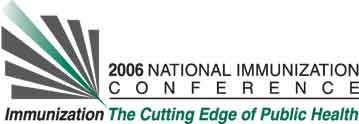Kimberly R. Middleton, Division of Health Care Statistics, CDC/National Center for Health Statistics, 3311 Toledo Road, Room 3305, Hyattsville, MD, USA and Michael McNeil, Bacterial Vaccine Preventable Disease Branch, Epidemiology and Surveillance Division, National Immunization Program, Centers for Disease Control and Prevention, 1600 Clifton Road, NE, MS E61, Atlanta, GA, USA.
Learning Objectives for this Presentation:
By the end of the presentation participants will be able to discuss visits to emergency departments where tetanus vaccine was given.
Background:
The Advisory Committee on Immunization Practices (ACIP) published guidelines for use of tetanus vaccine for wound management. Previous surveys suggest that 1-6% of patients with tetanus-prone wounds in the emergency department (ED) receive suboptimal tetanus vaccine prophylaxis.
Objectives:
N/A
Methods:
Data from the 2003 National Hospital Ambulatory Medical Care Survey (NHAMCS) were analyzed for ED visits where tetanus vaccine was given. The NHAMCS samples approximately 480 hospitals in 112 geographic areas during an assigned 4-week reporting period, data are weighted to produce national estimates. Over 90% of eligible hospitals complete the survey. Tetanus vaccine visits were calculated using 8 drug/vaccine mentions. ED visits were evaluated using International Classification of Diseases, 9th Revision, Clinical Modification (ICD-9-CM) diagnostic codes to approximate the ACIP wound management classification including: wounds and avulsions (870-897, 910-919), crushing injuries (925-929), burns (940-949), and frostbite (991.0-991.3).
Results:
In 2003, there were 1.8 million ED tetanus vaccine visits. Demographics for these visits included; white patients (81%), male (57%), private insurance (46%) and age 25-44 years (40%). Open wounds accounted for 40% of tetanus vaccine visits; however, other injuries such as contusions (11%) and fractures (8%) were also present. According to NHANES III, 72% of Americans 6 years and above have protective levels of tetanus antibody. Of the total 17.4 million estimated ED visits for patients 6 years and above with tetanus-prone wounds, where vaccine was potentially indicated, our data indicate only 8.9% patients received tetanus vaccine.
Conclusions:
Only 8.9% of patients seen in EDs with tetanus-prone wounds according to ACIP guidelines received vaccine. However since NHAMCS does not routinely collect data on patients' immunization status, we cannot determine whether the ACIP guidelines are being correctly followed and future study is indicated.
See more of Posters
See more of The 40th National Immunization Conference (NIC)

